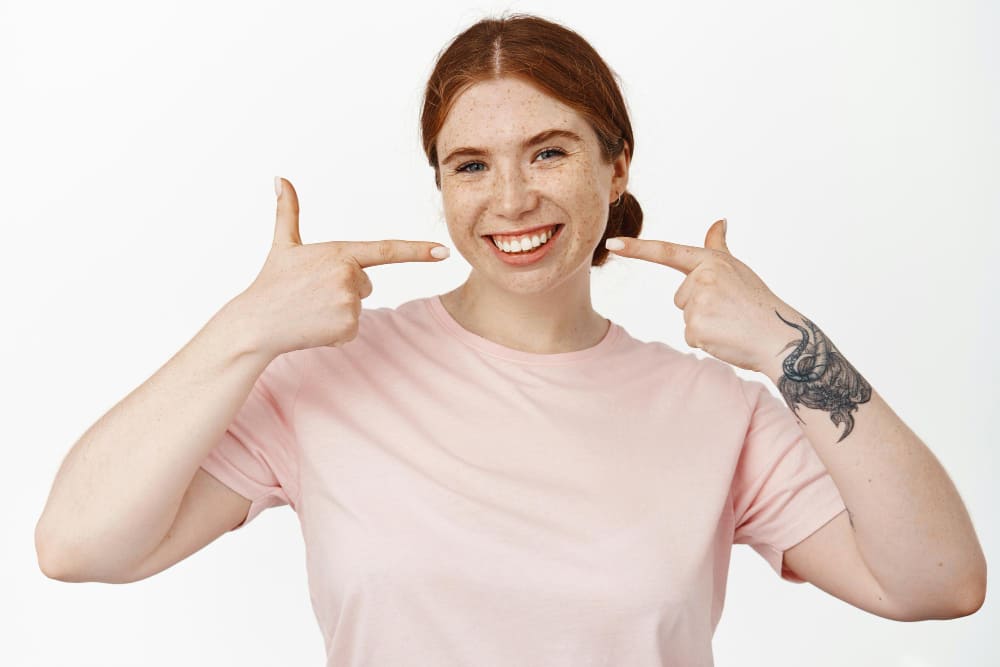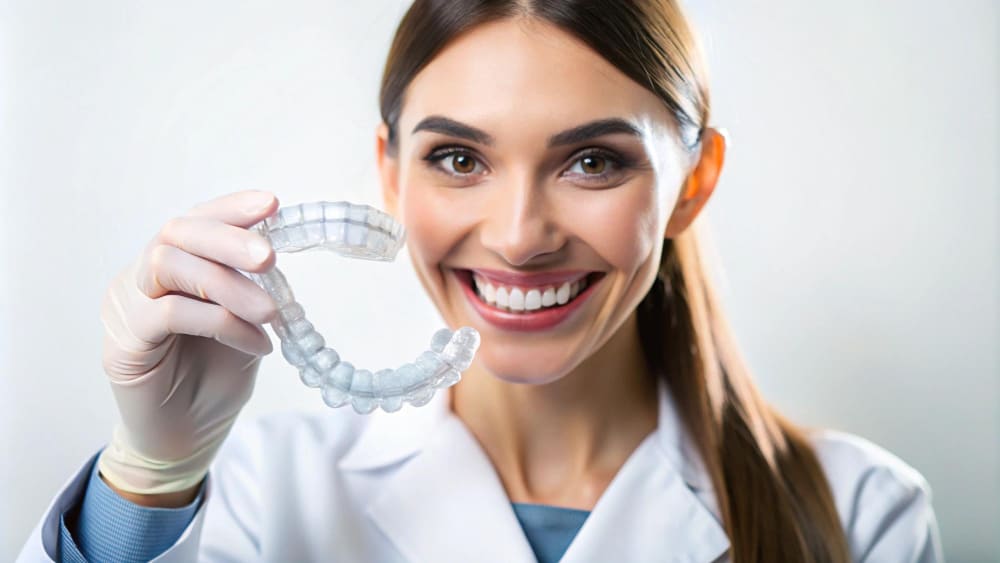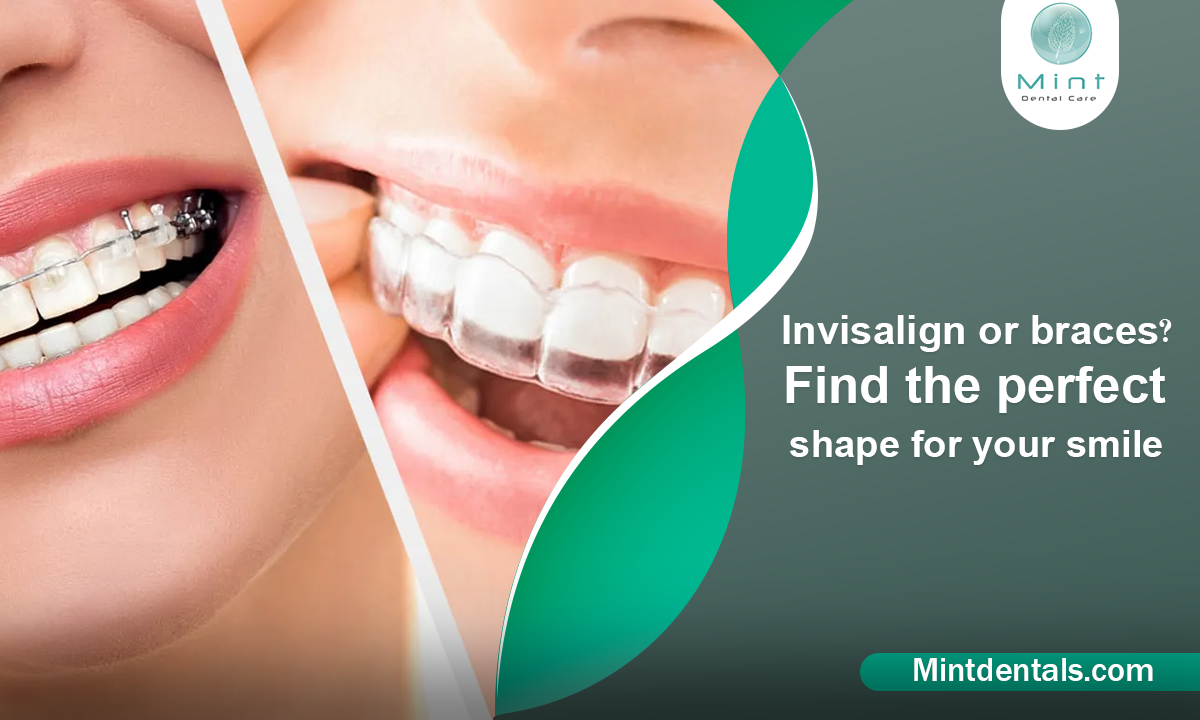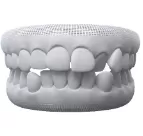When it comes to straightening your teeth and achieving that perfect smile, many people find themselves debating between two popular orthodontic treatments: Invisalign and traditional braces. Both options are highly effective, but they work in different ways and offer unique benefits. So, which one should you choose?
In this article, we will explore the key differences between Invisalign and braces, their advantages and disadvantages, and how to determine which treatment is best for your specific dental needs.
What is Invisalign, and How Does It Work?
Invisalign is a modern orthodontic treatment that uses clear, removable aligners to gradually straighten teeth. These aligners are custom-made for each patient and fit snugly over the teeth, applying gentle pressure to move them into the desired position. The aligners are typically worn for 20-22 hours a day and are replaced every one to two weeks as the teeth shift.
The clear aligners make Invisalign a discreet option for those who want to avoid the appearance of traditional metal braces. Since they are removable, Invisalign allows for greater flexibility and convenience when it comes to eating, drinking, and oral hygiene.
How Do Traditional Braces Work?
Traditional braces consist of metal brackets that are glued to the teeth and connected by wires and rubber bands. These components work together to apply constant pressure, gradually moving the teeth into their correct positions. Adjustments are made periodically by the orthodontist to ensure that the teeth continue to shift as planned.
Braces have been used for decades to treat a wide range of orthodontic issues, from crooked teeth to more complex bite problems. They are typically worn for 18 months to 2 years, depending on the severity of the case.

What Are the Key Differences Between Invisalign and Braces?
While both Invisalign and braces are effective at straightening teeth, they differ in several key areas:
- Appearance:
- Invisalign: The clear aligners are nearly invisible, making them a popular choice for adults and teens who want a discreet orthodontic treatment.
- Braces: Traditional braces are made of metal and are more noticeable. However, ceramic braces offer a less visible option with tooth-colored brackets.
- Comfort:
- Invisalign: The smooth plastic aligners are generally more comfortable than metal braces, as they do not have brackets or wires that can irritate the gums and cheeks.
- Braces: Braces can cause discomfort, especially after adjustments. The metal wires and brackets can also cause sores in the mouth.
- Removability:
- Invisalign: One of the biggest advantages of Invisalign is that the aligners are removable. This allows for easier eating and brushing, with no dietary restrictions.
- Braces: Braces are fixed to the teeth and cannot be removed until the treatment is complete. This means certain foods, such as sticky or hard items, must be avoided to prevent damage to the braces.
- Maintenance:
- Invisalign: Because the aligners are removable, patients can brush and floss normally. However, the aligners must be cleaned regularly to prevent bacteria buildup.
- Braces: Brushing and flossing can be more challenging with braces, as the wires and brackets create more areas for food and plaque to accumulate. Special tools like interdental brushes may be needed.
- Treatment Time:
- Invisalign: In some cases, Invisalign can achieve results in a shorter time frame compared to braces, typically ranging from 12 to 18 months. However, this depends on the complexity of the case and how well the patient follows the treatment plan.
- Braces: Braces generally require 18 months to 2 years for full results, although treatment time can vary depending on the severity of the dental issues.
- Effectiveness for Complex Cases:
- Invisalign: While Invisalign is highly effective for mild to moderate cases, it may not be suitable for severe orthodontic issues, such as significant bite problems or extreme tooth misalignment.
- Braces: Traditional braces are often the best option for more complex cases, as they provide more precise control over tooth movement.
What Are the Benefits of Invisalign?
Invisalign has become increasingly popular due to its many benefits, including:
- Discreet Appearance: The clear aligners are virtually invisible, making Invisalign an attractive option for individuals who want to straighten their teeth without drawing attention to their orthodontic treatment.
- Comfort: With no metal wires or brackets, Invisalign aligners are more comfortable and less likely to cause irritation in the mouth.
- Removability: Invisalign aligners can be removed for eating, drinking, and brushing, offering greater flexibility and ease of use compared to braces.
- No Dietary Restrictions: Since the aligners are removable, there are no food restrictions. You can enjoy all your favorite foods without worrying about damaging your orthodontic appliances.

What Are the Benefits of Traditional Braces?
Traditional braces also offer several advantages, including:
- Effective for All Cases: Braces can treat a wide range of orthodontic issues, from mild crowding to severe bite problems. They offer more precise control over tooth movement, making them suitable for complex cases.
- No Discipline Required: Since braces are fixed to the teeth, there is no need to worry about forgetting to wear them. This makes them a good option for children and teens who may struggle with the responsibility of wearing aligners for the required number of hours each day.
- Variety of Options: In addition to traditional metal braces, patients can choose from ceramic braces (less visible) or lingual braces, which are placed on the back of the teeth for a more discreet look.
Which Treatment is Faster: Invisalign or Braces?
The length of orthodontic treatment varies depending on the complexity of the case and the patient’s individual needs. However, in many cases, Invisalign can straighten teeth faster than traditional braces. The average treatment time for Invisalign ranges from 12 to 18 months, while braces typically require 18 to 24 months.
That said, treatment time is highly individual, and some patients may achieve faster results with braces, especially in more complex cases. Your orthodontist will assess your specific needs and recommend the best treatment option based on your goals and timeline.
Which Option is More Affordable?
When it comes to cost, both Invisalign and braces can be relatively comparable, depending on the complexity of the case and the duration of treatment. However, traditional braces tend to be slightly less expensive than Invisalign.
At Mint Dental Care, we offer competitive pricing for both Invisalign and braces, as well as flexible payment plans to make orthodontic treatment more accessible for all patients.
How to Decide Between Invisalign and Braces?
Deciding between Invisalign and braces depends on several factors, including your personal preferences, the complexity of your case, and your lifestyle. Here are some key questions to ask yourself:
- Do I want a discreet option? If so, Invisalign may be the better choice due to its nearly invisible appearance.
- Am I willing to follow strict instructions? Invisalign requires discipline, as the aligners must be worn for 20-22 hours a day. If you’re unsure about maintaining this routine, braces might be a better option.
- Do I have a complex orthodontic issue? For more severe cases, traditional braces may provide better control and more effective results.
- What is my budget? While both options are relatively similar in cost, braces are generally more affordable, making them a better option for those on a tight budget.
Why Choose Mint Dental Care for Your Orthodontic Treatment?
At Mint Dental Care, we believe that everyone deserves a beautiful, healthy smile. Our team of skilled orthodontic professionals is dedicated to helping you achieve your dental goals, whether you choose Invisalign or traditional braces.
Step into our modern, serene environment where comfort is our priority. We use the latest in orthodontic technology to ensure that your treatment is both effective and enjoyable. Whether you want the discretion of Invisalign or the reliability of traditional braces, we are here to guide you every step of the way.
Book Your Orthodontic Consultation at Mint Dental Care Today!
If you’re considering orthodontic treatment and want expert guidance on whether to choose Invisalign or braces, Mint Dental Care is here to help. Our team will evaluate your needs, discuss your options, and create a personalised treatment plan tailored just for you.
Contact us today to schedule your consultation and take the first step toward the smile you’ve always dreamed of. Whether you choose Invisalign or braces, we’ll ensure that your journey to a straighter smile is a comfortable and successful one.
Discover the Mint Dental Care difference today!















